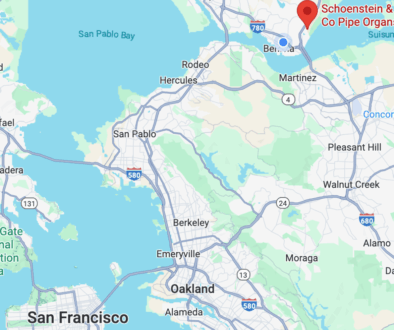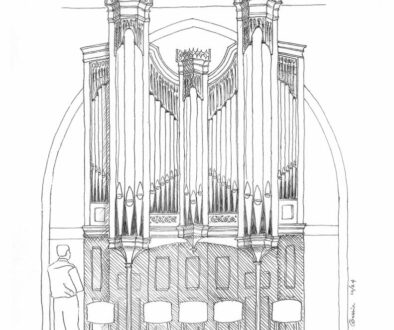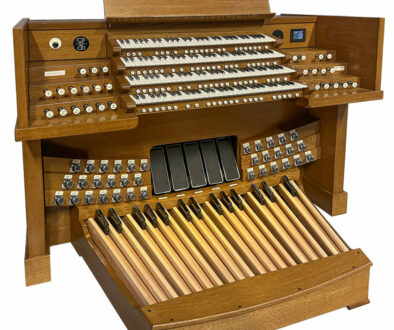Expression Unenclosed: A Symphonic Antiphonal Organ
The 1928 Welte organ at Grace and Saint Stephen’s Episcopal Church in Colorado Springs is a remarkable example of American symphonic organ building. It is filled with 8’ tone of every color and volume, it uses smart tonal design and voicing, its expressive capabilities are vast. These are all values we uphold nearly a century later, and so we were excited at the chance to complete this organ by adding an antiphonal division at the west end.
Welte’s original specification called for an antiphonal organ to draw the sound of the main organ to the back of the church. Over the years an additional musical problem emerged: bass did not carry well past the chancel. Rhythmic pulse did not come through to aid in hymn singing and processions. We wanted to design an antiphonal division that would enhance the already-expressive main organ while remaining small and practical. The space for the division was very tall and shallow, meaning there was no room for swell shades. Stops chosen had to be planned carefully for maximum color and dynamic variety. The tall space did, however, allow plenty of room for 16’ pipes.
Our antiphonal organ is comprised of three diapasons, one chimney flute, and a harmonic tuba. The three diapasons are of different tones and volumes. The 8’ Diapason is in line with our usual approach to antiphonals: most organs only need this stop to aid congregational singing, if they need an antiphonal organ at all. This diapason draws the sound of a rich, sonorous registration from the main organ to the back of the church without drawing attention to itself.
For more versatility another diapason of a milder tone was added. The Echo Diapason allows the organist to bring the sound of mp swell registrations from the main organ to the back of the church. This stop blends perfectly with the Welte Horn Diapason. With the Echo Diapason off, the swell sounds more distant, lighter – a fine effect. With the Echo Diapason on, that same swell sound becomes more present and gently surrounds the listener. Extension to 16’ pitch solves the rhythmic pulse problem with a clear, fast-speaking bass.
The Principal Conique is a way to bring subtle brilliance to the rear of the church as the main organ’s registration grows in volume. With reeds drawn on the Welte organ, the three diapasons in the Antiphonal give the main organ presence without sacrificing character or distracting the listener. The Chimney Flute, an English Lieblich Gedeckt, colors the other 8’ flues, expanding timbral possibility for each dynamic level. It also serves as a way to draw the many flute voices of the front organ back, allowing for that magical “flutes all around” effect. The Harmonic Tuba fits right in with the rest of the organ, heralding the entrance of the procession, or even accompanying the choir in the Howells Collegium Regale service.
When listening to both organs working together, one probably thinks the Antiphonal organ is enclosed – if they notice it at all! The new division can keep in lock-step with the main organ, from soft flutes to warm diapasons to rich reeds. Our challenge to complete an organ installed nearly 100 years ago in our shared symphonic ideal was a challenge, especially without the aid of swell shades. This project illustrated just how expressive unenclosed voices can be with the right design and voicing. Our thanks go to Organist and Choirmaster Simon Jacobs, Acting Organist and Choirmaster Scott Christiansen, as well as consultants Joseph Galema and Ralph Valentine, for giving us the opportunity. This project was funded through a generous gift from Conni Eggers. We hope our antiphonal organ brings out the beauty of the Welte organ for generations to come, giving even more musical possibility to a grand old instrument.
Bryan Dunnewald
Schoenstein & Co.


